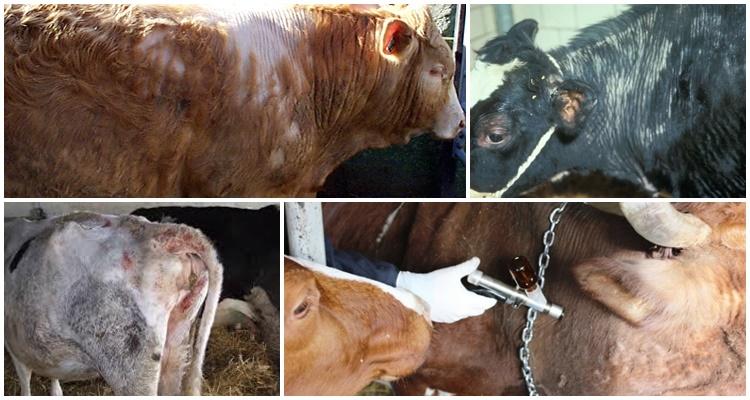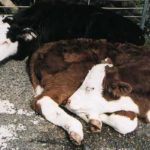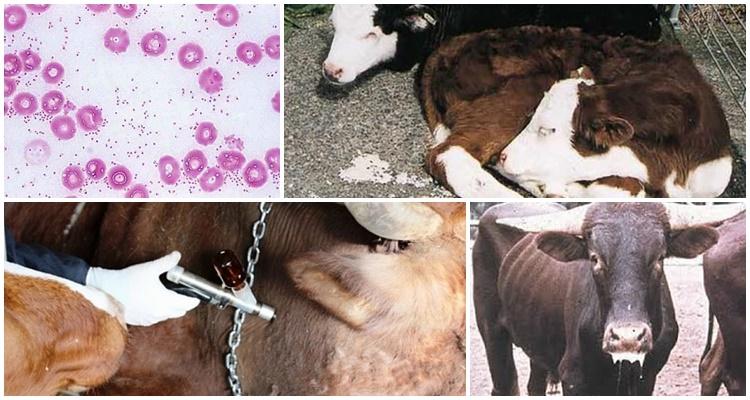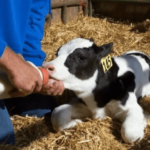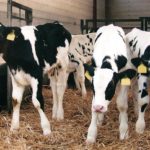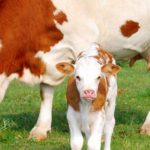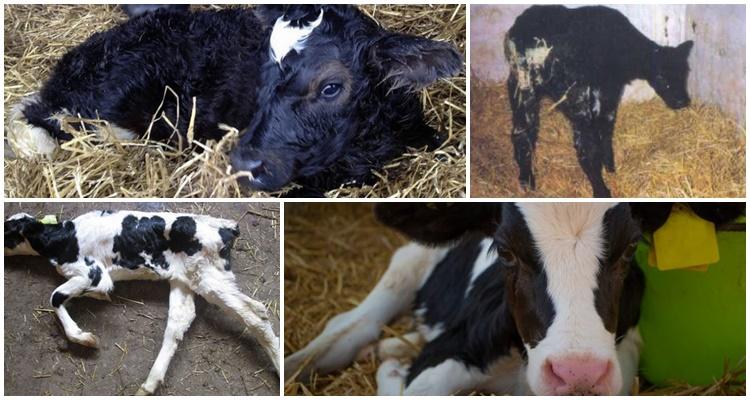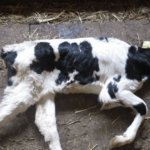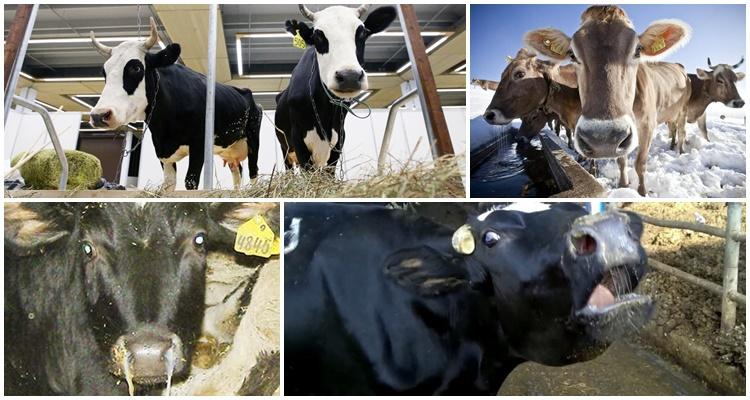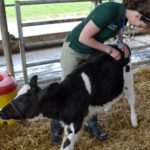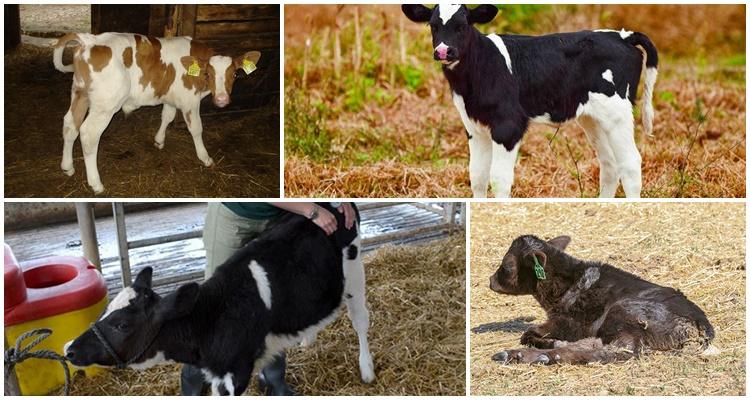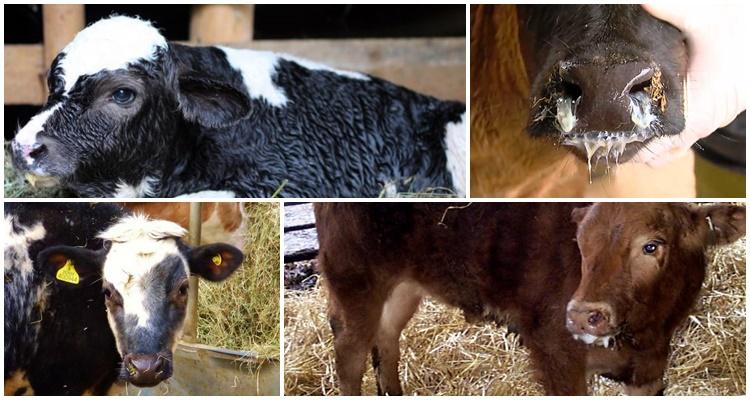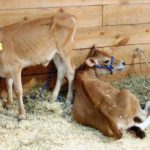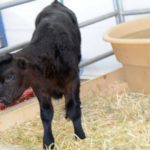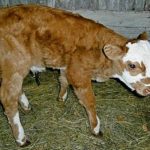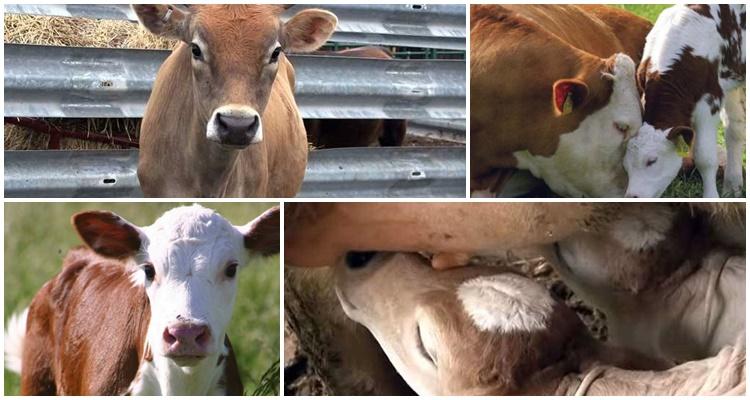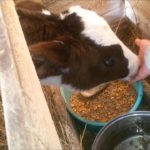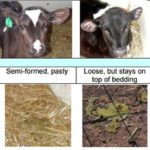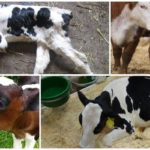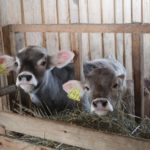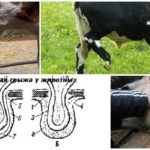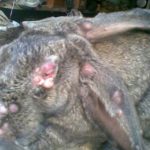Keeping cattle involves constant monitoring of the health of the animals. Timely assistance allows you to save the animal and also prevent the spread of infectious diseases among the herd. Calves are susceptible to various diseases due to weak immunity. Every breeder can distinguish pathology and prevent its development if he has some knowledge.
- Classification of pathologies
- Infectious diseases
- Scabies
- Streptococcosis
- Dictyocaulosis
- Pasteurellosis
- Cryptosporidiosis
- Aerobic dysentery
- Colibacillosis
- Paratyphoid
- Coronavirus enteritis
- Non-communicable diseases
- Hypodermatosis
- Tympany
- Bezoar disease
- Bronchopneumonia
- Rickets
- Dyspepsia
- Gastroenteritis
- White muscle disease
- What kind of nose should a healthy calf have?
Classification of pathologies
Calves are considered to be young animals that have not reached 1 year of age. They stay near the cow during the first weeks of life, and then begin to move within the fenced area on their own. Animals are susceptible to diseases and therefore require systematic diagnosis. Veterinary reference books contain information not only about the symptoms of diseases, but also about conditions associated with over-watering, poisoning, and various injuries.
Diseases and disorders are classified according to the main characteristics:
- not transmitted to other animals;
- infectious;
- parasitic.
Infectious diseases
A dangerous category is represented by infectious diseases transmitted due to the development of a pathogenic microenvironment. They quickly spread from an infected individual to other animals.
Scabies
Demodicosis, or scabies, develops due to the appearance of demodex mites in the calf. The mite infects hair follicles and sebaceous glands. Scabies is dangerous because it slows down the development of the calf and significantly weakens its immunity. Symptoms:
- appearance of bumps on the skin;
- partial hair loss;
- gluing wool in certain areas.
To prevent the spread of demodicosis, calves are treated with acaricides. When mange is diagnosed in one calf, the entire herd requires treatment.
Reference! Preventive measures against scabies include annual preventive treatment of the entire livestock throughout May.
Streptococcosis
Streptococcal infection affects small calves in the first months of life. The causative agent is hemolytic streptococcus, which can be transmitted through the birth canal. Symptoms:
- temperature rise to 42 degrees;
- the appearance of wheezing;
- increased heart rate;
- development of hypothermia;
- discharge of pus from the nostrils.
Sick calves are quarantined, antistreptococcal serum is administered, and antibiotics are prescribed. Sulfonamides, as well as symptomatic drugs, are considered effective drugs. Diet therapy with simultaneous injections is mandatory.
Dictyocaulosis
This is a seasonal disease that affects calves 3-7 months of age. Symptoms:
- sudden attacks of coughing;
- discharge of thick mucus from the nostrils;
- inactivity, apathy;
- temperature increase.
The causative agent of the disease is a nematode, which is localized in the bronchi of the calf. Timely detection helps to cure up to 90% of young animals. The skin is treated with local preparations, and an iodine solution is injected into the lungs.
Pasteurellosis
The causative agent is a bacterium. It reaches the calf up to a year through water or by airborne droplets.
Symptoms:
- apathy, depression;
- complete loss of appetite;
- increased heart rate;
- hoarseness of breathing;
- increased body temperature;
- discharge of pus from the nostrils;
- severe diarrhea;
- blue discoloration of mucous membranes.
Pasteurellosis is quite difficult to cure. Timely detection allows you to quickly prescribe diuretics, anti-inflammatory and antibacterial drugs. The starting antibiotic for the treatment of pasteurellosis is Penicillin. After the acute stage of the disease has passed, the young animals are injected with a special serum. A concomitant therapeutic method is the use of antimicrobial drugs.
Cryptosporidiosis
Cryptosporidiosis is caused by parasitic species, cryptosporidium. They develop in the body over 3-7 days, localize in one place, forming large colonies. The source is infected animals and carriers. Symptoms:
- digestive tract disorders;
- weakness;
- decreased appetite;
- increased thirst;
- severe diarrhea.
Making a timely diagnosis allows animals to be treated symptomatically. Calves are given a remedy for diarrhea, water-salt metabolism is restored, and dietary feed is prescribed.
Aerobic dysentery
Newborn calves are susceptible to anaerobic dysentery. Infection occurs during the feeding process. The cause of the disease may be the use of dirty drinking utensils. The acute form can lead to the death of the calf. Symptoms:
- severe diarrhea;
- exhaustion of the body;
- dehydration.
Death occurs as a result of the development of pulmonary edema and impaired liver function. If anaerobic dysentery is diagnosed in a newborn calf, then all young animals are immediately vaccinated in order to preserve the livestock.
Colibacillosis
The second name for colibacillosis is white diarrhea of suckers. The causative agent is enteropathogenic Escherichia coli containing a somatic antigen. Signs:
- a sharp increase in temperature;
- lethargy, apathy, loss of appetite;
- soreness of the abdominal wall muscles, which manifests itself on palpation;
- gray-white diarrhea;
- inability to digest colostrum.
Treatment of colibacillosis involves the administration of hyperimmune serum simultaneously with an antibacterial course. Preventive measures include antiparasitic sanitary and hygienic measures, which are carried out when keeping pregnant cows, as well as during delivery and in the first days of life of calves.
Paratyphoid
Paratyphoid fever is caused by Genter's wand. The disease is acute from the very beginning. Signs:
- loss of appetite;
- temperature increase;
- the appearance of pink sores on the abdomen;
- persistent diarrhea;
- apathy.
Treatment is based on the administration of antiparytic serum. At the same time, measures are taken to improve living conditions and monitor the quality of feed.
Coronavirus enteritis
The reason is that a special virus enters the body. The fatal outcome is 30-50% of the total number of diseases. Signs:
- damage to the intestinal mucous membranes;
- atrophy of the stomach walls;
- damage to the mucous membranes of the oral cavity;
- presence of ulcers in the mouth;
- bloating;
- persistent diarrhea.
Coronavirus enteritis can be cured with urgent vaccination. To get out of this condition, special serums are used, and symptomatic treatment is also prescribed.
Non-communicable diseases
Non-communicable diseases are no less dangerous. They can cause serious problems.
Hypodermatosis
This is a chronic disease caused by subcutaneous gadflies. Gadfly larvae can parasitize a calf’s body for six months, injuring internal organs and tissues. Symptoms that gradually develop if the calf is sick:
- constant anxiety;
- the appearance of itching;
- swelling;
- soreness of the skin;
- the appearance of tubercles.
Treatment begins immediately after the detection of gadflies: vaccination is carried out, antibacterial drugs are administered, and local treatment is carried out.
Advice! Infected calves should not be pastured together with other animals.
Tympany
The disease affects calves when they begin to switch from dairy foods to other types of feed. Symptoms:
- repeated vomiting;
- refusal to eat;
- rapid breathing;
- hardening of the scar;
- enlargement of the left side of the animal's abdomen.
Calves are injected with a liter of an aqueous solution of ichthyol or kerosene mixed with clean water. This technique helps enhance rumen contraction and reduce the amount of gas produced. The reasons are the following factors:
- consumption of low-quality food;
- change in diet;
- incorrect calculation of daily food volume;
- blockage of the esophagus with large pieces of food.
Bezoar disease
Veterinary medicine states that bezoar disease is most common in lambs. Calves begin to get sick when they are weaned from cows. This provokes a disturbance of appetite, which can result in perversion. The perversion is expressed in the fact that the calves begin to lick the fur of their mothers, and then each other.
Hairs that enter the intestines gather in clumps, accumulate and cause serious problems. Sick calves must be isolated, the composition of the feed ration is improved, additional minerals and vitamins must be introduced, Apomorphine is administered subcutaneously or iodine tinctures are given with milk. Treat diarrhea or constipation symptomatically. Preventive measures against the disease are adequate feeding and proper maintenance of cows and calves after weaning.
Bronchopneumonia
Bronchopneumonia develops due to hypothermia. Treatment involves eliminating symptoms:
- reducing temperature with antipyretics;
- drinking plenty of water;
- use of antibiotics if necessary.
Rickets
Rickets in newborn calves is manifested by abnormal bone development. Brittleness and deformation of bones lead to damage to the internal organs of animals. Rickets is the result of an unbalanced diet of cows, as well as a lack of vitamins and minerals. Rickets in calves is diagnosed based on the following signs:
- skull deformation;
- thickening of joints;
- curvature of the limbs.
Nursing rickets is a long process that requires attention. In addition to meeting the maintenance requirements, it is necessary to review the diet, as well as use veterinary drugs that replenish the lack of vitamins and minerals.
Dyspepsia
Dyspepsia is typical for young cattle. Dyspepsia is caused by poor nutrition of the cow or the inability of the calf's stomach to digest the food received. Dyspepsia is characterized by the following symptoms:
- temperature drop;
- the appearance of intestinal spasms;
- lethargy, apathy, rapid breathing;
- persistent diarrhea.
Therapy includes feeding the calf, as well as the use of antibiotics to stop the development of putrefactive microflora.
Gastroenteritis
Gastroenteritis in calves occurs as a reaction to the inflammatory process of the gastrointestinal tract. Gastroenteritis can be caused by feeding a calf with low-quality food, or a sudden transition from dairy feeding to feeding adult food. Gastroenteritis is treated with antibiotics and antimicrobial agents. At home, they do gastric lavage, and also be sure to isolate the sick calf from other animals.
White muscle disease
“White mouse,” according to researchers, occurs as a result of a lack of certain groups of vitamins and minerals in the body. Outbreaks of white muscle disease are diagnosed in winter or spring, when the lack of vitamins is especially noticeable. Symptoms:
- loss of appetite;
- apathy;
- persistent diarrhea;
- blurred eyes;
- rapid breathing;
- the appearance of seizures.
After diagnosis, all means are used to restore the vitamin and mineral balance.Additionally, the treatment course includes camphor oil, which normalizes heart function. If the disease is complicated by concomitant symptoms, antibiotic therapy is prescribed.
What kind of nose should a healthy calf have?
A nasolabial mirror can tell a lot about the condition of an animal. The skin of the nose has a special density and structure. A dry and hot nose often indicates an increase in temperature and the development of an infectious disease. But, if the dryness lasts no more than 10-15 minutes, then there is nothing to worry about. A moist and cool nose is considered normal. The animal may lick it frequently and cause copious salivation. If the nose is unnaturally cold and blue, then this indicates the development of a disorder in the animal’s body.

